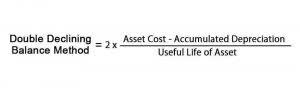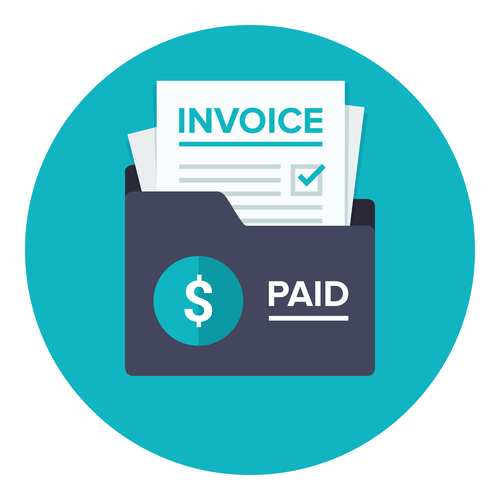Comprehensive introduction to the key concepts and methodologies of costing, including budgeting, cash flow forecasting, decision analysis, performance evaluation, and non financial measures. Management accounting is extremely important for businesses because it allows them to translate hard data about their finances into reports that can be analyzed and used for strategic business decisions. After all, financial accounting doesn’t mean anything if you don’t apply the insights to your plans and decisions for your business. Margin analysis is primarily concerned with the incremental benefits of optimizing production.
Decision Accounting
It helps the management to perform all its functions, including planning, organizing, staffing, direction, and control. In other words, the field of accounting that provides economic and financial information for managers and other internal users is called management accounting. Management accounting is the provision of financial and non-financial decision-making information to managers. In management accounting or managerial accounting, managers use the provisions of accounting information to inform themselves better before they decide matters within their organizations, which allows them to manage better and perform control functions.
Advance Your Career with the CMA
- After you have completed your first assessment and acquired a firmer ground in the business, you may decide to add a few more parameters that would lead to effective decision-making.
- A separate practice known as managerial accounting refers to the discipline of record-keeping with an eye towards budgeting and performance measurement, typically conducted by managers.
- Margin analysis is primarily concerned with the incremental benefits of optimizing production.
- The specific functions and principles followed can vary based on the industry.
Not only does performance measurement help a company course-correct flawed or unprofitable operations, but this crucial benchmark is instrumental in letting a company compare its performance with that of its direct market competitors. Managerial Accounting boasts “Review Problems” at the end of each major section or learning objective which offer practical opportunities for students to apply what they have learned. These “Review Problems” allow students to immediately reinforce what they have learned and are provided within the body of the chapter along with the solutions. This book adopts a concise, jargon-free, and easy-to-understand approach that is ready with concise sections and concepts when the student is ready to study in a format the student wants. Key concepts are provided in short segments with bullet points and step-by-step instructions to simplify concepts.
What is Managerial Accounting?
For example, an AR aging report may list all outstanding receivables less than 30 days, 30 to 60 days, 60 to 90 days, and 90+ days. All this information is conducive to recognize the key performance indicators in various areas of the business. Having said that, if you find your business growing steadily even after its first few milestones, it might be time to revisit this table and trim down the unnecessary points. You may then want to focus only on the top 4 or 5 KPIs that would indicate a mega-development in the future. Through a detailed report of analytical techniques, it would be easy to point out the areas which need improvement.
Managerial Accounting
Whether you want to become certified or not, an advanced certificate can build on your expertise, strengthen and expand your skills and help you define and advance toward your personal and professional goals. You can command a higher salary if you have certain designations to complement your accounting experience and education. For instance, you can earn much more money with the certified management accountant (CMA) or the chartered global management accountant designation. The CMA is granted by the Institute of Management Accountants to accountants with an undergraduate degree and two years of experience, as long as they pass the two-part CMA exam.
Financial accounting is governed by accounting rules and regulations such as U.S. GAAP (Generally Accepted Accounting Principles) and IFRS (International Financial Reporting Standards). Managerial accounting is the process of identifying and analyzing financial information so that management personnel can make better-informed business decisions. Although the specific underlying details of managerial accounts may vary from one business to the next, they often itemize a company’s spending practices, cash flow streams, debts, and assets. It also aids banks in evaluating whether or not a company is worthy of a business loan. You’ll also learn how to create financial reports and reports on profitability, liquidity, solvency and stability using the Generally Accepted Accounting Principles (GAAP).
Standard costing techniques compare the standard costs of materials, labor, and expenses incidental to production, which is predetermined, with the actual costs that have occurred in the course of carrying out production. It presents the different alternative plans before the management in a comparative manner. The performance of various departments is also regularly communicated to the top management. Decision making is defined as the selection of a course of action from among alternatives.
Knowing where the cash will come from to carry out a hiccup-free business is undeniably an advantage. This helps the company decide the future flow of work and plan out the details in terms of expenditure. A managerial accounting system is more suitable for bigger enterprises which are at the peak of growth. This is possible because the company can afford the price of installing a system in place and even hire professionals to make the best of it to prevent the company from future meltdowns. In order to achieve business goals, managerial accounting uses a number of different techniques.
For performing the functions efficiently and effectively, managers need to communicate with the various parties and parts of the organization. The interpretation of financial information depends on the capacity of an interpreter as one has to make a personal judgment, personal prejudices and bias affect the objectivity of decisions. Decisions are to be taken by management, and implementation of decisions is also done by management.
Internal management accounting systems are used to provide critical information to management to be used in operational business decision-making. A manufacturing company might use these systems to help in the costing and managing of their process. A hospital might use management accounting systems to assist them in insurance billing and other in-house requirements. Estimating cash flows and the impact of cash flows on the business is essential.
Auditing involves analyzing and assessing a company or organization’s financial statements, creating a plan and documenting a financial activity file. You’ll learn how to investigate and examine data, statements, records, operations and performances of an organization for a stated purpose. You’ll also learn how to evaluate this objective evidence and use established procedures in order to formulate a judgment and communicate this through an audit report.
While management accounting can bring clarity to simple yes-no decisions (such as whether to buy an asset or sell a division), it isn’t as helpful for selecting among multiple choices. Financial accountants may come to mind when you think about accounting, but management accountants have different objectives. Instead of preparing reports for external stakeholders, management accountants provide relevant financial information for an organization’s internal management — its employees, managers and executives — to inform decision-making and improve performance. Management accounting is definitely a good career if you enjoy math and generally have an aptitude for working with numbers. It’s also a great option if you love supervising, doing analysis, working with financial statements, making decisions, solving problems, and if you work well with others.
You may also advise management if you find areas that are being run in a financially risky or fraudulent way. All public companies domiciled in the United States must abide by generally accepted accounting principles (GAAP), which are a set of accounting formats that help investors compare and contrast the metrics of different organizations. According to GAAP, a company must enter its financial accounting data in its balance sheets, income statements, and cash flow statements.
These will pique your students’ interest and were designed to show how issues can be resolved using the concepts presented in the chapter. Finally, “Business in Action” features in Managerial Accounting link managerial decision-making to real business decisions to help your students complete the learning cycle from concept, to accounting decision, to real-world application. In other words, management accounting involves more specialized analysis than financial accounting and is used more sparingly.
This information is used to prepare income statements, cash flow statements, and balance sheets, In smaller firms, you may end up performing these tasks yourself. A management accountant performs analysis to forecast, budget, and measure performance and plans, then presents them to senior management to assist in operational decision-making. After obtaining a degree, build your skills while gaining experience to prepare yourself for future employment or certification.
Management accounting played a vital role in the decision-making process in a business organization. Ratio accounting signifies the technique and methodology of analysis and interpretation of financial statements using accounting ratios derived from such statements. There is a large number of statistical and graphical techniques that are used in management accounting. Some common examples are the master chart, chart of sales and earnings, investment chart, etc. It has already been stated that the management accounting of an enterprise is to provide management and other operations as a basis of protective and constructive to management.
Together with overhead costs, management accountants use direct costs to adequately value the cost of the goods sold in different stages of production and inventory. Management accounting also includes generating reports of budgeting, trend analysis, costing, forecasting sales on weekly, daily, or monthly performance. Get started in your career by enrolling in an accredited program and building your skills with online courses.
Managerial accounting is able to meet the needs of both departments by offering information in whatever format is most beneficial to that specific need. Management Accounting Systems are principally aimed at monitoring costs related to manufacturing goods and services. Apart from traditional cost accounting, the management accounting systems also include throughput accounting, lean accounting, and transfer prices.
He started as a public accountant and earned the CPA credential, then advanced to management accounting before earning the CMA credential. According to Mulling, the career ladder can go in many different directions depending on your individual goals. In fact, he says management accountants often make their mark at companies as vital decision-makers. He says the best way to advance is by volunteering to work on various projects and decision-making tasks to increase your knowledge of the company and your role in its success. A management accountant may also identify trends and opportunities for improvement, analyze and manage risk, arrange the funding and financing of operations, and monitor and enforce compliance. They might also create and maintain a company’s financial system and supervise its bookkeepers and data processors.
He adds that management accountants are often called upon to monitor marketing efforts or act as analysts on special projects. These experiences can prepare them for additional management responsibilities either in finance or general management. Searle says lower-level accountants and analysts can advance by demonstrating analytic, leadership, and financial skills. “Playing a key role in operational decisions and special projects is how management accountants set themselves apart from the traditional financial accountant,” he says. Mulling also recommends getting involved in your profession at the local or global level. For instance, the IMA provides that opportunity and also helps professionals create a network for career opportunities, skill enhancement, and decision support.
Some universities allow students to switch between accountancy programs after their first year, to choose a track that best matches their interests and abilities, following their general introductory courses. Accounting is the process by which financial information about a business, organization or individual is recorded, classified, summarized, interpreted and communicated. Drawing from fields such as information technology, law, statistics, business and accounting business forms and templates economics, accounting is a multidisciplinary subject that focuses on an organization or individual’s economic activities. As a general note, CPAs are considered to be more qualified than tax professionals when it comes to preparing taxes on an individual basis as they are trained to analyze business and personal finances to maximize savings and minimize taxes. It’s also worth noting that while all CPAs are accountants, not all accountants are CPAs.
Costs may be broken down into subcategories, such as variable, fixed, direct, or indirect costs. Cost accounting is used to measure and identify those costs, in addition to assigning overhead to each type of product created by the company. Management Accounting System implements techniques involved in management accounting and works across all the departments in a company.
Having completed the relevant examination and fulfilled all the requirements, a certified public accountant may pursue accounting careers in either assurance services or public accounting. Many organizations make use of and provide support for trainee accountants as they work to achieve chartered status. Usually, a three-year salaried contract is agreed upon, with the student needing to complete a certain amount of work experience, take accounting courses on ethics and other relevant subjects and pass some examinations.
North Carolina’s Craven Community College offers a specialized accounting certificate. You can learn how to manage payroll data and prepare paychecks with this 17-credit payroll accounting program. If an accounting certificate sounds like a good fit, keep reading to learn more about the best online accounting certificate programs. An external auditor, meanwhile, carries out obligatory audits of public sector and government bodies or private businesses, examining their finances and ensuring that money raised by taxes is used effectively and efficiently for tax payers. Those applying to study accounting are usually required to demonstrate a strong background in mathematics, while those who have taken courses in statistics or business will be at an additional advantage.
Managerial accounting involves the use of information that relates to the sales revenue and costs of a company. One part of managerial accounting is cost accounting, which focuses on a firm’s complete production costs. This is done by analyzing all of the corporation’s fixed costs along with all of its variable costs. Knese’s career provides an example of one of the possible paths for management accountants.
He has written numerous articles and continues to make many presentations around the country on teaching excellence. The content included in an introductory managerial accounting course does not change substantially annually. Another reviewer mentioned that there may be a need to update some of the example companies after a while. Financial https://www.bookkeeping-reviews.com/ accounting is the practice of tracking a company’s financial transactions and building statements that summarize that company’s financial activities and circumstances. Most small businesses use this method to track their transactions and organize records into consolidated statements summarizing their financial circumstances.
Using historical data as a reference, the management observes the current information to check the impacts of business decisions. So the information about management accounting depends on the managers’ own rules and regulations. In contrast, financial accounting is concerned with providing information to stockholders, creditors, and others who are outside the organization. Managerial accounting is concerned with providing information to managers—that is, the people inside an organization who direct and control its operations. This includes maintenance of proper data processing and other data processing and other office management services, reporting on the best use of mechanical and electronic devices.
These purchases are listed as entries on a balance sheet and are considered short-term assets to the organizations. Learn about managerial accounting the different types, careers, and how to enter this field. The only “relevance” issue might be the companies used as examples are great for today, might not be in 10 years. But for the most part they are very well known (I think with college age students as well) so most likely helps peak interest. The text “Managerial Accounting” provides a comprehensive and broad review of the major topics usually covered in an introductory Managerial Accounting course.










